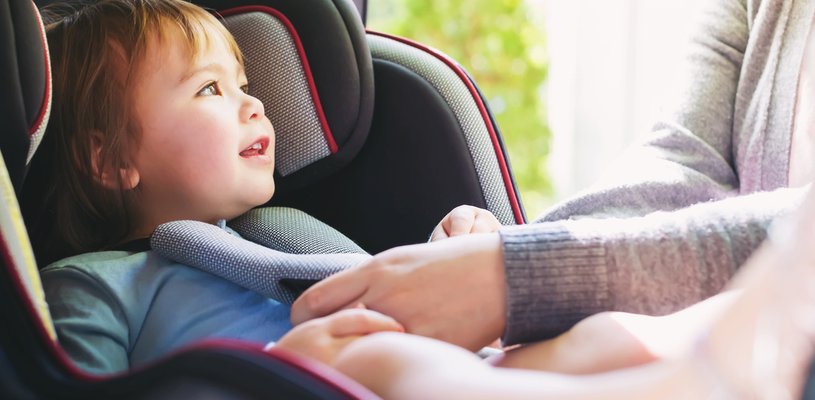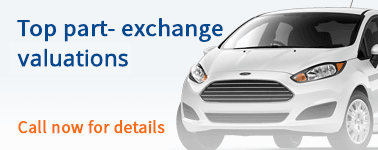
When purchasing a new car, you may not have considered the safety that that car may provide your child. Did you know, not all cars, such as sports car, are actually suited to fitting child safety chairs? When you’re travelling with a child in the car, you must ensure you have the correct car seat and restraint in order to protect young ones, especially babies. Find out all the information you need to ensure the highest amount of safety when you’re next driving with children in the car.
What are the child safety laws in the UK?
There are a range of child-safety laws when you’re driving in the UK. With the obvious rule of car seat regulations, there are a range of factors that go into deciding what seat is suitable for each child.
The most important factor when driving with children in the car is ensuring that you have the correct car seat in place. The government indicates a range of rules based on children’s height and weight, as well as the type of seat necessary based on the child’s age.
Car Seat Regulations
All children must use a child car seat, until they’re over the age of 12 years old or 135 centimetres tall - whatever comes first. Children over 12 or more than 135cm tall must wear a seatbelt, and it’s recommended that children always travel in the back of the car, rather than the front.
Car Seats are split into different groups, based on the weight of your child. Each group describes the type of seat you’ll need, as well as the parameters that need to be followed when fitting your car seat. There are also height-based seats, which are decided based on the height of your child.
Height-based seats are known as ‘i-Size’ seats, and must be rear-facing until your child is over 15 months old. As soon as your child is over 15 months of age, you’re able to use a forward-facing seat. You must ensure that the height-based seat you use has been EU-approved - the way you can check this is to ensure that the seat you choose shows a label with a capital ‘E’ in a circle and ‘R129’ aside.
Weight-based seats, and the way the seats are to be restrained, depend on the weight of the child also. As car seats are available in ‘groups,’ you may be able to choose more than one type of seat in the group that you can use based on the weight of your child. Ensure that the seat you’ve chosen is EU-approved; these seats have a label showing a capital ‘E’ in a circle, and ‘ECE R44’ included also.
Babies: Group 0 & 0+ Seats
New babies need to travel in rear-facing baby seats, that are in group 0 or 0+. Depending on the age of your baby, you can decide which seat is most appropriate; Group 0 seats consist of a lateral baby-carrier, a rear-facing baby carrier, or rear-facing baby seat using a harness. Group 0 chairs are for children between 0-10kg, with Group 0+ seats being for babies weighing up to 13kg.
Either of the seats listed are appropriate for newborn babies; from the moment you bring your new baby home from the hospital, you need to ensure they’re travelling in a rear-facing baby seat. Babies are safest in the backseat of your car - if they do travel in the front seat, the airbag must be turned off as this could seriously injure a baby in case of an accident.
Toddlers: Group 1 Seats
Group 1 is made for children weighed between 9-18kg. Rear or forward-facing car seats are acceptable for toddlers, however, the government suggest to still use rear-facing seats as long as possible. It may seem that your little one’s feet may press against the back of the car, however it’s better that they stay in a rear-facing seat until they reach the weight-limit - just to be extra sure of their safety.
Most Group 1 seats are forward-facing, but there are some rear-facing seats available. These seats can cause some problems depending on the size of of your car, so it is really important that you try them in your car’s space before you purchase them.
Children up to 12: Group 2 & 3 Seats
Children who have moved out of their toddler-sized chairs are able to move into either a Group 2 (15-25kg) car seat, or a Group 3 (22kg-36kg) car seat. These car seats are usually known as ‘booster seats.’
It’s better to keep your child in their Group 1 seat as long as it fits them, as it offers more protection than a Group 2 or 3 car seat. You’ll know it’s time to move into a booster seat when your child is to tall for the chair - your child’s eye-line should not be above the seat back.
When you move a child into a booster seat they may look a little short for the seat - if this is the case, you can use a booster cushion to ensure that they fit in the seat correctly. However, a booster cushion does not really offer a lot of protection. Therefore a high-back booster seat is the safest option for your child, as it offers support and protection for the neck and head of your little one.
Even though your child is able to move into an adult seat at the age of 12 or 135cm tall, you can still use booster seats as lots of chairs cater to children upwards of the age of 12.
Seat Belt Regulations
As mentioned previously, children are able to move into an adult car seat at the age of 12 or if they’re over 135cm. However, when children move into an adult car seat, the seat-belt may lie funny or uncomfortably on their stomach or neck.
Seat belts should lie on the strongest part of your child’s body, such as the hips, chest or shoulders. Therefore it’s essential to ensure that when you decide to move your child out of their booster seat they are comfortable and still remain safe in the car.
You can also get some seat belt protectors for your child to ensure that when they’re sitting in the car, the seat belt does not rub against their skin. These are perfect whether or not your child is sitting in a booster or adult car seat, as it makes sure that your child is not experiencing any discomfort whilst you’re driving.
Fitting a Car Seat
When you’ve chosen the correct car seat for your child, you must ensure that when you place it in your car, the belt has a diagonal strap to keep your child safely within the seat. If not, then you must ensure that:
-
The car seat is specifically designed for use with a lap seat belt
-
The car seat is fitted using ISOFIX anchor points
ISOFIX is an international installation interface to standardise the points between a child’s car seat and a vehicle. This system minimises installation errors and ensures optimal protection through a really strong connection between the seat and the car. The points which are anchored to the car are metal loops found between the adult seat cushion and the bottom cushion on the vehicles seat, where an ISOFIX compatible car seat may be attached. The child car seats have ‘extendable arms’ which are connected directly to metal loops within the vehicle - ensuring a very secure attachment.
Once you’ve purchased and fitted your car seat, you must also ensure:
-
You deactivate any front airbags before fitting a rear-facing baby seat if you’re placing your child in the front seat of your car
-
You do not fit a child car seat in side-facing seats.
Making sure you take every precaution is extremely necessary when considering your child’s safety in a vehicle. When you drive with a child in your car, it can be extremely distracting - ensuring they are strapped in correctly and made comfortable will give you peace of mind on your journey.


